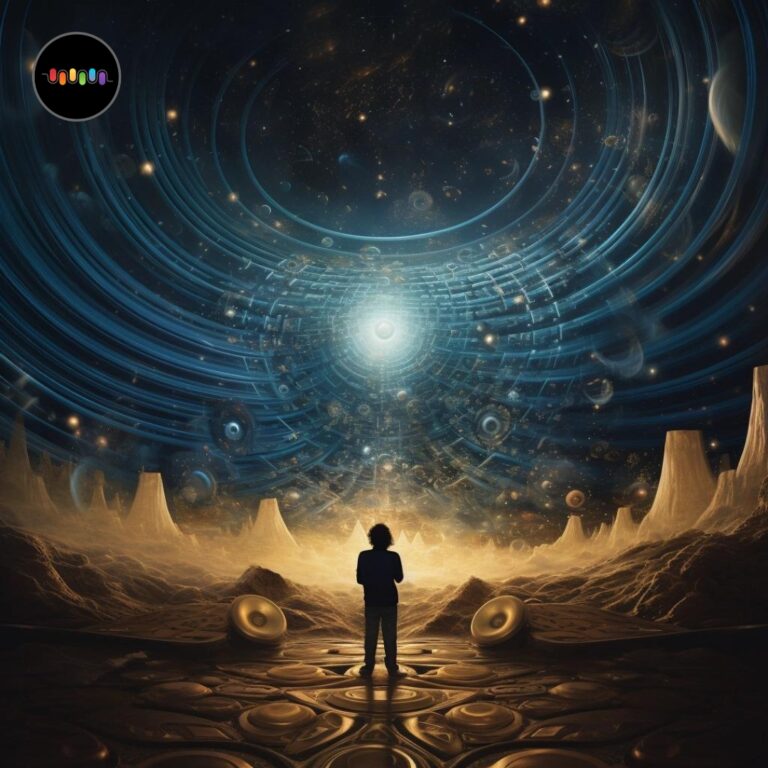What is reverb in music?
Reverb, short for reverberation, is an audio effect that adds depth and spaciousness to a sound. It signifies the natural phenomenon of sound waves bouncing off surfaces within an enclosed area, indicating how sound engages with the space around it.Reverb is an integral part of music production, adding a sense of realism and immersion to audio recordings.
The discovery and evolution of reverb in music production
The discovery of reverb dates back to ancient times when humans first started creating music. Early musicians and composers noticed the acoustic properties of different spaces and incorporated them into their compositions. In the early 1900s, artificial reverb techniques were developed, using physical chambers and plates to simulate the natural reverb effect.
Thanks to technological advancements, digital reverb became widely available during the 1970s.There are a number of reverb plugins and softwares today that provide an extensive array of reverb effects tailored to diverse musical genres and individual preferences.
Reverb vs Echo, what is the difference?
Both echo and reverb fall under the category of sound reflection, yet they differ significantly in their characteristics and applications within music.
Reverb is a continuous blend of reflections, simulating diverse acoustic environments. Reverb serves as a crucial tool in audio production, adding realism and spatial depth. For example, check out this background track made with Beatoven.ai on which Reverb effect was added,
In contrast, Echo is characterized by distinct and delayed sound repetitions, involving noticeable gaps. Echo effects are frequently utilized in artistic and creative contexts in music, particularly in genres like rock and electronic music, contributing to spatial dimensions and depth in sound. For example, check out this track made with Beatoven.ai on which Echo effect was added.
The role of reverb in creating immersive soundscapes for films and podcasts
Reverb plays a crucial role in creating immersive soundscapes for films and podcasts..The addition of depth and realism to the audio contributes to an immersive experience, making the listener feel like a part of the scene. In films, reverb is used to create ambiance and enhance the atmosphere of different locations. For example, in a scene set in a cathedral, reverb can be added to the dialogue and background music to make it sound real. Similarly, in podcasts, reverb can be used to create a sense of intimacy or to simulate different environments, depending on the podcast’s theme and content.
How reverb enhances the overall listening experience
Reverb enhances the overall listening experience by adding a sense of depth and space to the audio. It helps in creating a realistic and immersive environment for the listener. Without reverb, audio recordings can sound dry and lifeless. Reverb adds a natural decay to the sound, simulating the reflections in a real space. It can make vocals and instruments sound fuller, warmer, and more three-dimensional. Additionally, reverb can also help in separating different elements in a mix, making them more distinguishable and clear.
Tips on incorporating reverb in film and podcast music compositions
When incorporating reverb in film and podcast music compositions, it’s important to consider the desired effect and the specific context of the scene or episode. Here are some tips to keep in mind:
Examples of content where reverb was added to background music
In the film ‘Interstellar,’ composer Hans Zimmer used reverb to create a sense of vastness and cosmic atmosphere in the score. The reverb added depth to the orchestral arrangements, making the music sound epic and immersive. In the podcast ‘Serial,’ the use of reverb in the background music helped in creating a mysterious and eerie atmosphere, enhancing the storytelling and keeping the listeners engaged. These are just a few examples of how reverb can be effectively used in background music to enhance the overall listening experience.
Thank you for reading! If you are looking to make your own background music for your content, try out beatoven.ai.

